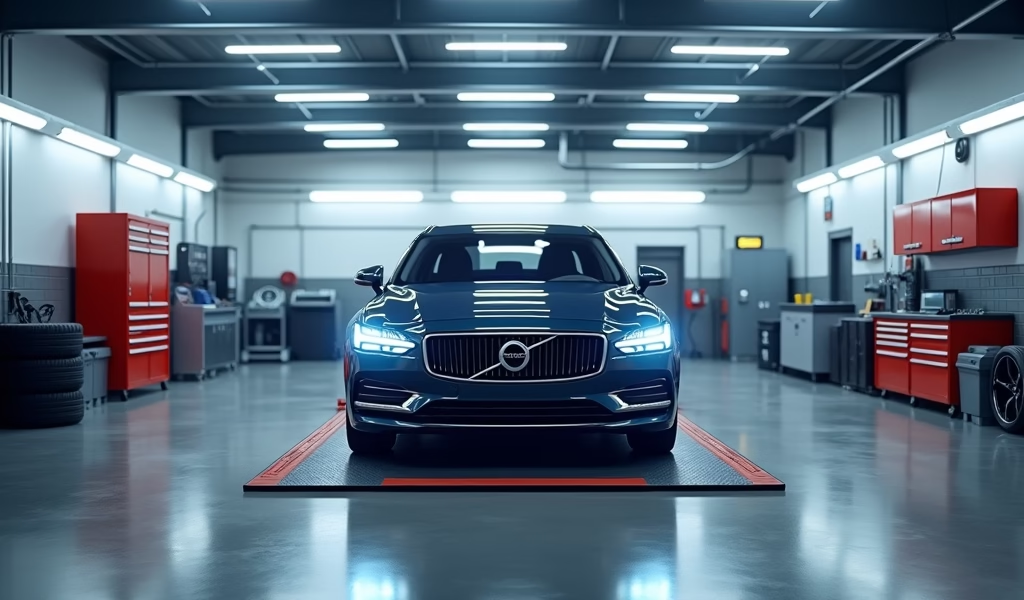Overview
The article provides five key strategies for new drivers to reduce their insurance costs: choosing a modest vehicle with good safety ratings, completing a defensive driving course, enrolling in usage-based insurance programs, joining family policies for multi-car discounts, and maintaining a clean driving record from the beginning. These approaches can save new drivers thousands of dollars while still providing proper protection, as insurance companies ultimately reward behaviors that reduce risk.
Table of Contents
- Understanding New Driver Insurance: The Basics
- Tip 1: Choose the Right Vehicle for Lower Premiums
- Tip 2: Take a Defensive Driving Course
- Tip 3: Consider Usage-Based Insurance Programs
- Tip 4: Leverage Family Policies and Multi-Car Discounts
- Tip 5: Maintain a Clean Driving Record from Day One
- Conclusion: Drive Smart, Save Smart
- Frequently Asked Questions
Understanding New Driver Insurance: The Basics
Diving into the world of new driver insurance can feel like trying to change your timing belt without a manual – overwhelming and potentially expensive if you make a mistake! As someone who’s spent 20+ years under the hood and helping drivers navigate the complex world of auto protection, I’ve seen firsthand how the right insurance choices can save freshly licensed drivers thousands of dollars.
New driver insurance typically comes with higher premiums because, statistically speaking, inexperienced drivers pose a greater risk on the road. Insurance companies aren’t being mean – they’re just playing the odds based on years of accident data. But don’t worry! There are plenty of ways to keep those costs down without sacrificing coverage.
The good news? You’re not the first person to face this challenge. Millions of new drivers have successfully navigated these waters before, and with the right approach, you can find affordable insurance for new drivers that won’t drain your bank account.
Let’s pop the hood on new driver insurance and explore five proven tips that can help you secure better rates while staying properly protected on the road. These aren’t just theoretical suggestions – they’re practical strategies I’ve seen work time and again for my customers and their newly licensed family members.
Tip 1: Choose the Right Vehicle for Lower Premiums
The car you drive has a massive impact on your insurance rates, especially as a new driver. Think of it this way: would you rather insure a gentle family sedan or a fire-breathing sports car with a newly licensed teenager behind the wheel?
Insurance companies categorize vehicles based on several factors:
- Safety ratings and crash test results
- Repair costs and parts availability
- Horsepower and performance capabilities
- Theft rates for particular models
- Vehicle size and weight
As a rule of thumb, modest, mid-sized vehicles with excellent safety ratings will cost significantly less to insure. For example, a Honda Civic, Toyota Corolla, or Mazda3 typically qualify for lower premiums than a Mustang GT or even a luxury sedan like a BMW 3-Series.
Before purchasing a vehicle, do your homework. The Insurance Institute for Highway Safety offers comprehensive safety ratings that insurers consider when setting rates. Vehicles with advanced safety features like automatic emergency braking, lane departure warnings, and adaptive cruise control not only keep you safer but can also qualify for insurance discounts.
I recently helped a family whose son had just gotten his license. They were considering gifting him their older sports coupe while upgrading to a newer vehicle for themselves. After running the numbers, we discovered they could save nearly $1,200 annually by instead giving him their practical sedan and purchasing the sportier option for the parents with decades of clean driving history.

Tip 2: Take a Defensive Driving Course
One of the smartest investments a new driver can make is completing a certified defensive driving course. These programs teach crucial skills that go beyond basic driver’s education, focusing on hazard recognition, emergency maneuvers, and defensive techniques that can prevent accidents before they happen.
From an insurance perspective, these courses are pure gold. Many providers offer substantial discounts – typically 5-15% – for new drivers who complete approved defensive driving training. Why? Because data consistently shows that graduates of these programs have fewer accidents and moving violations.
The beauty of this approach is the double benefit: you’ll become a genuinely safer driver while simultaneously lowering your premium costs. In most cases, the course pays for itself within months through insurance savings.
Look for programs that are specifically recognized by insurance companies in your state. These might include:
- AAA defensive driving courses
- National Safety Council defensive driving
- State-approved driver improvement programs
- Advanced driver training at specialized facilities
Many courses now offer online options, making them more convenient than ever. However, I generally recommend in-person training with actual behind-the-wheel components when possible. There’s simply no substitute for hands-on experience in developing real-world driving skills that could save your life.
Once you’ve completed the course, don’t assume your insurance company will automatically apply the discount. Be proactive! Contact your agent with your completion certificate and ensure the discount appears on your next premium statement.
Tip 3: Consider Usage-Based Insurance Programs
Technology has revolutionized how insurance companies assess risk, and new drivers can leverage this to their advantage. Usage-based insurance (UBI) programs – sometimes called telematics or pay-as-you-drive insurance – monitor actual driving behavior rather than relying solely on demographic data and statistical averages.
These programs typically use a smartphone app or a small device that plugs into your vehicle’s diagnostic port to track factors such as:
- Mileage (how much you drive)
- Time of day (avoiding high-risk late-night hours)
- Acceleration patterns (smooth vs. aggressive)
- Braking habits (gradual vs. hard stops)
- Cornering behavior (controlled vs. excessive speed)
- Phone usage while driving
For conscientious new drivers, these programs offer a golden opportunity to prove you’re not the statistical stereotype. While most insurance companies price new drivers based on average risk factors for their age group, UBI allows you to demonstrate your individual driving habits deserve better rates.
Many major insurers now offer these programs, including Progressive’s Snapshot, State Farm’s Drive Safe & Save, Allstate’s Drivewise, and specialized auto insurance for new drivers from companies focusing on telematics technology.
The potential savings can be substantial. Safe drivers commonly report discounts of 10-30% through these programs. Even better, many provide feedback and driving tips that can help you become more aware of any risky habits before they lead to accidents.
One important caution: verify whether the program can increase your rates for poor driving or only offers discounts for good behavior. Some programs penalize behaviors like hard braking, even when those actions might sometimes be necessary to avoid hazards.
Tip 4: Leverage Family Policies and Multi-Car Discounts
For young drivers still living at home or college students who maintain their parents’ address as their primary residence, family policies offer significant advantages over individual coverage. The financial difference can be staggering – often 50-70% less expensive than a standalone policy.
Why such a dramatic difference? Insurance companies consider the entire household risk profile, including the parents’ driving history, credit score, and loyalty with the company. These factors can substantially offset the higher risk associated with an inexperienced driver.
To maximize your savings on a family policy:
- Consider naming the parents as the primary drivers of the more expensive vehicles
- Ask about student-away discounts if attending college more than 100 miles from home
- Inquire about good student discounts (typically requiring a B average or better)
- Bundle with homeowner’s or renter’s insurance for additional discounts
- Maintain continuous coverage to build insurance history
Even young adults who live independently should explore whether they qualify for legacy or alumni discounts through their parents’ long-term insurance relationships. Many companies offer special rates to children of loyal customers, even on separate policies.
The multi-car discount represents another substantial savings opportunity, with most insurers offering 10-25% off when insuring multiple vehicles on the same policy. This approach works particularly well when adding a modestly priced vehicle for a new driver to an existing family policy with higher-value cars.
Remember that these family-based approaches require transparency about who’s regularly driving each vehicle. Misrepresenting primary drivers – a practice sometimes called “fronting” – can result in denied claims or policy cancellation.

Tip 5: Maintain a Clean Driving Record from Day One
This might seem obvious, but it bears emphasizing: nothing impacts your long-term insurance costs more than your actual driving record. The financial consequences of tickets and accidents for new drivers can be particularly severe, often following you for 3-5 years with premium increases of 20-80% depending on the violation.
Insurance companies view your early driving history as predictive of your long-term risk profile. Establishing a clean record from the beginning creates momentum toward better rates through:
- Safe driver discounts (typically 10-23% after 3-5 years without incidents)
- Accident forgiveness eligibility (protection against rate increases after a first accident)
- Decreasing new driver surcharges over time
- Qualification for preferred insurance tiers with better coverage options
- Lower deductible options as you demonstrate responsibility
Beyond avoiding tickets and accidents, consider establishing a relationship with a specific insurance agent who can advocate for you as your driving history matures. These professionals often have discretion to apply additional discounts or policy features that aren’t automatically offered through online systems.
For those inevitable moments when you do make a mistake, explore whether your state offers ticket dismissal through defensive driving courses. Many jurisdictions allow drivers to keep their records clean by completing approved safety programs after minor violations.
The best new driver car insurance rewards consistent, safe behavior. Think of each day of accident-free driving as a deposit in your financial future. According to NHTSA data, new drivers who establish safe habits in their first 12-24 months tend to maintain those patterns throughout their driving careers.
Conclusion: Drive Smart, Save Smart
Navigating new driver insurance doesn’t have to be a financial nightmare. By implementing these five proven strategies – choosing the right vehicle, completing defensive driving training, exploring usage-based programs, leveraging family policies, and maintaining a clean record – you can significantly reduce your insurance costs while maintaining quality protection.
Remember that insurance companies ultimately reward behaviors that reduce risk. Every safe driving decision not only protects you physically but also builds toward lower premiums over time. The habits you establish now will impact your insurance costs for years to come.
Be patient with the process. Even with perfect implementation of these strategies, new driver insurance will still cost more than experienced driver coverage – at least initially. The key is to start the clock on building your positive insurance history as soon as possible.
With a thoughtful approach to both your driving and your insurance choices, you’ll be well on your way to affordable coverage that gives you confidence on the road. Drive smart, stay safe, and watch those premiums drop as you gain experience behind the wheel!
Frequently Asked Questions
How much more expensive is insurance for new drivers?
New drivers typically pay 2-3 times more than experienced drivers for the same coverage. This premium difference gradually decreases over 3-5 years with a clean driving record.
Can I get my own insurance policy as a teenager?
Yes, but it’s usually prohibitively expensive. Most insurers require drivers under 18 to have a parent or guardian as the primary policyholder.
Does the car I drive really make that big a difference?
Absolutely – vehicle choice can impact a new driver’s insurance by $1,000+ annually. Modest, safe vehicles with good crash ratings will significantly lower your premiums.
How long am I considered a “new driver” for insurance purposes?
Most insurance companies consider you a new driver for 3-5 years after licensing. Your rates should decrease gradually each year if you maintain a clean record.
Should I just get minimum coverage to save money?
This is rarely advisable. Minimum liability coverage leaves you financially vulnerable to accidents, especially as a higher-risk new driver. Consider higher liability limits with perhaps higher deductibles instead.

